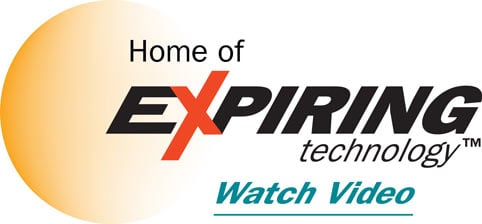Blog
7 Common Mistakes with Visitor Management
by Paul Kazlauskas
Visitor management is all about security and safety. Creating a workplace environment where your employees feel safe is critical for productivity and success. In addition to protecting people, visitor management systems also protect property. An organization’s assets, like equipment, supplies, and trade secrets, are all safer when visitors, vendors, and contractors know you have a record of their being there. Likewise for your employee’s personal belongings.
Over the years, we’ve heard stories about how some facilities view and treat visitor management as an after-thought. Below are seven common mistakes in visitor management that we’ve encountered and our ideas for improving the facility security in each of the given circumstances.
1. Concentrating on the appearance of the building to the detriment of security.
The security of a building should never take a back seat to its aesthetics. You should place security cameras so they are in view, not hidden. Seeing the camera is half the value due to its presence being a deterrent. Lighting should be strategically placed so any given area of the facility can be seen (either by security cameras or by people). Crime Prevention Through Environmental Design (or CPTED) suggests that the design of buildings, landscaping, and outdoor environments can either encourage or discourage crime. Per the CPTED Checklist, walkways should be barren of any trees or bushes, so people with malicious intentions don’t have a place to hide.
2. Failing to secure and account for all building entrances.
It is critical to secure every entranceway to your building. Ideally, there should be one main way to enter and exit a building with a few emergency exits. The exact number of emergency exits depends on the number of people typically in the building, but emergency exits should only be able to be opened from the inside of a building. In addition, having one way to enter a building allows your visitors to be funneled to a front desk or lobby to be registered.
3. Not documenting visitors to the building.
Every guest, contractor, vendor, parent (in a school), delivery person, or potential new hire that comes to your building should be documented in a visitor management system. The fact that a visitor entered the building should be documented. In addition, a visible visitor badge should be worn by the visitor to indicate that they have been processed by the front desk and are allowed to be in the facility. When visitors wear color-changing expiring visitor badges, it tells you instantly if they have signed in today. This keeps your building safe and secure by preventing unauthorized entry.
4. Believing your company is too small for a visitor management system.
Many small businesses believe they do not need visitor management systems or feel they don't get enough visitors to justify one. However, your front desk reflects your brand. Showing you care about security is a great first impression. In addition, the United States Department of Labor’s Occupational and Safety & Health Administration (often referred to as OSHA) suggests having an Emergency Action Plan (EAP) which includes accounting for visitors who are in the building during an evacuation.
5. Thinking you’re covered by only having a handwritten visitor registry book.
Manual visitor logs capture visitor information, but do give the opportunity for visitors to leave inaccurate or illegible information. We’ve also heard anecdotes of salespeople flipping through the registry book to see which competitors have been onsite before them. In addition, it is labor-intensive to audit a paper logbook, even if all the information is correct and legible. If you must use manual sign-in books, we recommend our two-part Visitor Badge Sign-In Books, which identify visitors and keep an automatic, confidential record of the visit, without having to write the visitor’s information twice. The right side is glued together to prevent snooping.
6. Allowing unannounced visitors to have access to the building.
Every visitor should have an employee expecting them. Otherwise, the visitor could be wasting your employee’s time or have bad intentions once they gain access to the facility. You should have a policy that unannounced visitors are not allowed in the facility. In addition, employees who are expecting visitors should notify the security department ahead of time of the pending arrival.
7. Not securing vital offices and rooms inside of the building.
There are certain rooms and offices in an organization that should always be locked and potentially guarded. The Accounting Department most likely contains sensitive information such as customer credit card numbers. The Human Resources Department contains employee social security numbers and home addresses and personal phone numbers. The computer server room contains the system for allowing employees to do their work. These are three examples of rooms that should always have a facility security plan.
What other examples of poor visitor management practices have you witnessed? Join the conversation by adding your thoughts in the “Comments” section below.
eVisitor Software is a cloud-based visitor management software that is affordable, simple to use, yet robust. It is used by all types of facilities, including healthcare, schools, manufacturing, corporations, warehouses, and more. Watch our video to learn more and contact us for a free demo!
Posted on 1/13/2023



 Paul Kazlauskas
Paul Kazlauskas
 Andrew Jones
Andrew Jones
